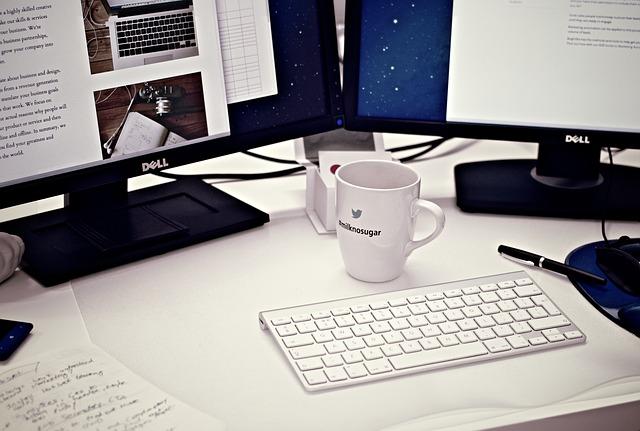Archive for February 2017
Stretching for the Inflexible
Feeling stiff as a board? It’s time to start unwinding your tight muscles.
If you are among the legion people who consider themselves, “inflexible,” let’s start doing something about that! Rather than lingering on the dangers of being inflexible (risk of injury from daily activities), let’s focus on the importance and purpose of flexibility. Flexibility is essential for performing everyday motions with ease and without injury: think about bending down, turning your neck or reaching for an object high on a shelf. While we take these motions for granted and perform them countless times a day, they will become more difficult if we let flexibility fall by the wayside.
Move more and move differently.
If you consider yourself, “inflexible,” remember that anyone can increase their flexibility given the right kind of stretching. All you need to know is where to start and with that we can help you. Here are some stretches we have come up with that will break you into a flexibility routine gently.
- Spinal twist: Lay supine with legs straight. Inhale and bring your left knee up toward your chest. Exhale and lower your left knee across your body. Extend your left arm and let your neck turn left so you are looking back over your shoulder. Hold 30 seconds, repeat on the other side.
- Upper shoulder stretch: Reverse the effects of sitting at a desk while sitting or standing. Use a towel for this one, placing it over your left shoulder. Grab the top of the towel with your right hand and the bottom with your left creating tension on the towel. Pull up with your left hand to stretch the shoulder. Hold 10 seconds, switch hands and repeat.
- The chest stretch: stand up as straight as possible with feet hip-width apart. Straighten your arms out like wings and raise them high and then lower them over the back of your shoulders while squeezing the shoulder blades together. Return your arms in front of your body and repeat, each time lowering the arms toward shoulder level.
Stretching could be the most important thing that is not a part of your routine.
By keeping our muscles pliant and flexible, we can reverse much of the damage inherent with poor posture and sedentary lifestyles and keep ourselves independent into old age. Let’s work together to start breaking you out of that stiff mold and restoring flexibility to your life today!
Dr. Randall Holmes, D.C.
How your Computer Screen Causes Headaches
Workplace and computer screen headaches
Staring at computer screens is a primary occupation for many people nowadays and, whether it be for work or pleasure, this can take a toll on our bodies and brains. Though it feels second nature for many, interacting with screens is anything but straightforward- there are many unconscious bodily and neurological processes that take place which can leave us vulnerable to headaches. Here are a few ways that computers can cause headaches:
- Eye strain: because text is so small, we have to keep our computer screen at a reasonable distance, which is closer than our eyes are comfortable with for resting. Our eyes are struggling to keep focus at a point so close and this can cause fatigue and headache.
- Lighting of the work environment: a brightly lit office and improperly adjusted monitor creates an excessively bright environment that can be hard for our eyes to bear.
Your computer screen can be a headache trigger
Before choosing to blame your headaches on computer screens outright, it is important to consider other factors including posture, caffeine intake, overall stress level at work, diet and level of exercise- there is a good chance that your headache is a manifestation of a combination of all these factors.
However, if the computer screen is a common trigger, here are a few ways to prevent the onset of computer-related headaches:
- Take a break once per hour. Focus on activities that are completely unrelated to the monitor.
- Try not to let your eyes refocus too often. Shifting between referring to the paper on your desk and the computer screen forces your eyes to refocus often and leaves them vulnerable to strain.
- Turn down the overhead lights, adjust the brightness and contrast settings on your monitor.
- Create a good ergonomic environment: this includes monitor settings as well as posture- you want to make your office as easy on body and brain as possible.
These tips are easy enough in theory, but we want to know: can you be disciplined enough to put them into practice? They will surely go a long way toward helping prevent headaches related to computer screens. However, chronic headaches are not normal- there could be an underlying problem such as subluxation or muscle tension that is contributing further to regular headaches. At our office in Houston, we can help detect the true cause of your headaches and start a path of healing that will reduce their grip on your life.
Dr. Randall Holmes, D.C.
Releasing Tight Neck Muscles at Home
^Hans the human is holding his head forward
Tight muscles that are holding your head forward
With forward head posture, we often see the muscles in the front of the neck become overextended, while those in the back are short and tight. This is a characteristic picture of muscular imbalance in the head, neck and shoulders and it sets up an unstable support for your head! Let’s focus on two sets of paired muscles that are frequently noted for their tightness in people who have FHP: the sub-occipitals and sternocleidomastoid.
- The sub-occipitals are located in the back of the head and connect the head to the top of the spine- these are small muscles with a direct connection to the spinal cord. Tightness in this region has the potential to create muscular dysfunction and pain.
- The sternocleidomastoid connects from the middle of the throat to behind the ear and is responsible for flexion of the neck, and is innervated by the accessory nerve. This muscle can be clearly seen when you rotate your head to the side.
The way to begin reversing forward head posture is by releasing tight neck muscles
The occipital release:
- Lie flat on your back
- Use a tennis ball or foam roller and place it under your neck, right at the base of the skull.
- Turn your head and roll over the different muscles for about 5 minutes.
Releasing the sternocleidomastoid
- Turn your head to the side and locate the muscle.
- Use your fingers to gently massage the muscles; don’t dig your fingers too deep
- Roll the muscle with your fingers
- Repeat on the other side.
These techniques should instigate a noticeable relief in tightness of the neck. After releasing the neck from tightness and improving your experience with pain, we can start strengthening the muscles that will help keep your head atop your spine where it belongs.
Dr. Randall Holmes, D.C.
Do You Have Forward Head Posture?
Forward Head Posture (FHP) is allegorical to our society’s constant looking to the future.
We are at a point in time where our technology, for all its insistence that it optimizes our health, can also do us a great deal of harm. FHP itself has been around for a long time, more commonly known as “reading neck,” but it is taking on a new importance today; computers of all sizes have our rapt attention throughout the day and FHP is a natural result of this interaction.
When our brains are so involved, the same thing happens as when you are in the midst of a stimulating conversation, you lean in. But instead of your whole body, it is just your head moving forward toward the screen. Now quantify the amount of time you spend engaged with a phone, tablet or laptop and you begin to see the scope of the problem
A matter of pressure on the neck
As your head inches forward, it is leaving its true center of gravity: studies suggest that the spine is put under pressure by another 10 pounds per inch your head leans forward. At our office in Houston, we often treat people who are carrying their heads between 2-3 inches forward of their spine. You can perform a simple check using a wall test to determine whether you may have FHP:
- Align your heels at shoulder width and press your buttocks against the wall.
- In this position, your shoulder blades should also be touching the wall.
- Is the back of your head touching the wall?
- If not, you most likely have FHP
However this is nothing to fear; many people today are walking around with their heads at least mildly forward.
How we help at Holmes Chiropractic
Carrying your head forward all the time is likely to cause damage to vertebrae and muscles, especially those of the neck. We approach FHP with a mix of postural analysis, chiropractic adjustment, targeted stretching and strengthening of the neck muscles and improvement of daily habits to effect a change in the way you carry your head!
Dr. Randall Holmes, D.C.
The Pillow Prop: Posture from the Bed
This is aimed at you, college students!
How many minutes have you spent tinkering with a pillow pile until it feels just right for you to lean back against the wall or headboard to watch a show in bed?
For many people, this defines the penultimate phase of their day: struggling to find comfort to watch a show or read until you fall asleep. Unfortunately, trying to read, write or conduct work from the computer in bed is one of the most ruinous things you can do for posture and your body. Nothing about it sets you up for success (unless you have an ergonomic set-up)- there is no real support and very few positions lend themselves to comfort without stressing the back.
The pillow propping game
Picture yourself, pinned against the wall with a few pillows to support your lower back and a clear picture emerges of:
- Poor curvature and an imbalanced spinal column.
- Your neck bent at an aggressive angle
- No lumbar support
- Pain
But people will persist with this because bed is comfortable. So whether you are working from bed regularly or just trying to find comfort for recreation, keep a few tips in mind.
Let’s make this a little less painful: these tips will help prevent many of the bad effects inherent in the half-reclined, half-propped position that we seek.
- Use a pillow to prop your computer, keeping the monitor at eye level, and avoid over-flexing your neck.
- Put a pillow under your legs and behind the lumbar to create something approaching neutral posture.
- Stop using your bed for working! The bed is no replacement for an office chair and your brain will start to associate bed with work (and worse, pain!).
Above all, listen to your body. Get up regularly to break the monotony of sitting in your bed and stretch if you feel tightness occurring.
Dr. Randall Holmes, D.C.




